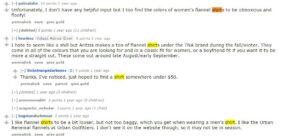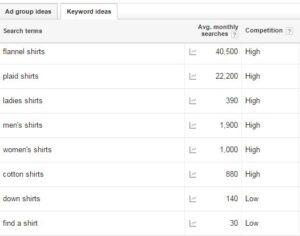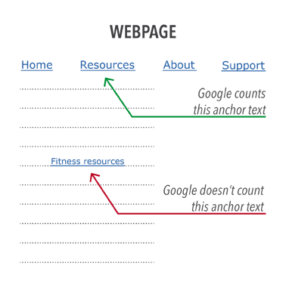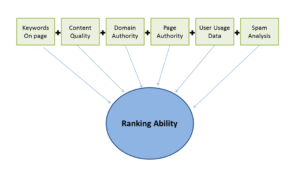Google uses 200 ranking factors in their algorithm, including Trusts, social signals and user-interaction. Well, today here is a list. Some are proven and some are controversial.
Long Tail Keywords in Title Tags:
Long tail keywords are the guts of the overall content strategy. Long tail keywords are those three and four keyword phrases that can drive search engine traffic quickly. Visitors are more probable to use long tail keywords when they are closer to a point of purchase. For instance, if you are a company that sells clothing your web page never going to appear near the top organic search result on “clothing” keyword because of too much competition. You should use long tail keyword on appear near the top organic search result wholesale clothing for men or wholesale clothing for women.
Targeted Keywords in First Paragraph:
Always use your targeted keyword in the beginning paragraph, for instance, if you require to rank on search engine for the keyword “delicious food” see following two headlines.
Headline # 1: The World’s Top 10 Best delicious Food –
Headline # 2: Top 10 Delicious Food in The World. Search Engine would see the 2nd headline as more about the topic of “yummy food” than the single. Why? Because your targeted keyword is at the start of the title tag. And then you should run with headline #2.
Produce Your Own Keywords:
You can easily get rank #1 for a keyword which you make and if you are creation becomes popular so you can produce a lot more traffic from search engines.
Use Outbound Links/ Hilltop Algorithm:
Outbound connections are directed to some other domain from your situation. Outbound links help in increasing the quality and trust of your site. In that respect are some types of extraneous connections to avoid: un-monitored links (such as user generated links) and undisclosed paid advertising.
Hilltop Algorithm:
Hilltop Algorithm used to determine relevant content to a particular keywords. Hilltop strongly consider page title and page heading in relevancy scores. The search engine uses hilltop to sort relevancy. So get at least one or 2 link quality, link from relevant resources in every piece of web content which you published.
Keyword in First Paragraph:
Always use keywords in the first paragraph, it is very important to know search engine this is the content really explains about the title.
In other words, Google pays close attention to where a keyword appears on your page. The earlier it appears, Google’s thinking goes, the more important it must be.
Published Long Content:
Write at least 1000 – 2000 words of content that you’re trying to rank for competitive keywords.
Long posts show Google that you’re providing in-depth information for seekers.
LSI Keywords:
LSI stands for Latent Semantic Indexing and it is a piece of the Google algorithm for indexing. LSI deals with the search relevancy. LSI possesses the power to detect spun content. Latent Semantic Indexing is an alternative term for similar words and synonyms used by google.
For instance, if you were writing about wholesale clothing.

Suggestion: Include 1-2 LSI keywords in every article.
LSI Keywords in Title and Description Tags: As with web page content, LSI keywords in the page meta tag probably help Google discern between synonyms. May as well move as a relevancy signal.
Internal Linking:
Internal links that lead from one page to different pages in the same field. It is most useful establishing site architecture. If you desire to pick up a neat example of internal link check out Wikipedia.
They add keyword-rich internal links to every entrance:

Create “best of” lists:
This is one of the greatest of my favorite SEO tips of all the time. It is always a worthy idea to use the content creators best in your blog post. It will have to rank your blog post and on SERP.
Here is an example below:
World’s Best Clothing Stores, etc..
Suggestion: We need to do once a week and get more attention from bloggers.
Keywords Idea Extracted From Reddit:
Key Point: Create value in content and cover hot trends/topics.
Reddit is a keyword research gold mine.
You can encounter a community of millions of people discussing every issue in real time.
Let’s suppose you are covering topics on Men’s Clothing.
Search Reddit on “Topic Keywords”
Browse the categories to find the relevant topic

For instance, I noticed “Shirts” related keywords;

Keywords are already in searches. We can use these phrases in our story.

Opinion: As you can see these keywords research really helpful for us.
Meta Title and Description Optimization:
Use your unique and relevant keywords in meta title and description. The Meta title limit is 60 characters with spaces and meta description limit is 160 characters with spaces.
Image Optimization:
Always utilize your short and descriptive keywords in alter tag. Employ a targeted keywords as image name, divided by dashes.
Keywords Density:
Keywords density is a portion of the number of times a keyword appeared on a web page with total number of rows. Thus, if in an article of 200 words and you are using your keyword 2 times so your density will be 2%.
Keyword in H2, H3 Tags:
One of the most important part is always using your keywords in H2 and H3 heading it is also a most important relevancy signal.
Keyword Word Order:
Keyword with an exact match in content has better ranking then same keyword phrase.
Number of Internal Links Pointing to Page:
The Number of internal links page importance to other pages on the site.
Internal Quality Links:
Your domain is significantly affected by the internal links and it may lead to low PR.
URL Length:
Lengthy URL may badly affect your visibility in search engine.
Use numbered lists and bullets to highlight important points:
Google and other search engine like and may prefer content with bullets and numbers. It helps break up your capacity for readers more user friendly.
Links From Competitors:
Getting links from relevant resources it will help in the SERP and more valuable for a page’s rank.
The Country TLD of Referring Domain:
Getting links from country-specific top level domain for example (Co.uk and etc.) it may help you rank better in that rural area.
Link Placement in Content:
It is recommended that link appears at the beginning of the content requires more weight than a link place at any other location for example last or mid paragraph.
How to choose text a link Sentiment:
If you like or not Google considers that link appears as a name you your website is taken as a negative while its inspection. So instead of using website URL link to the product or services you offer would be safe and give more result.
Positive Link Frequency/Velocity: avoid using too-many links in an article/content. With positive linking approach you can easily get bigger SERP.
What you should be Aware of while choosing link velocity: Heavy link frequency can easily reduce ranking as its acts negative elements of various search engine standards.
Link to such authenticated information sources such Wikipedia would help to build confidence and make your positive image among visitors and build a strong online presence.
Quality Link:
If you choose the wrong content or link your content to wrong detail this would affect your site traffic and also report to search engine as a dummy information provider. Make sure you create links to the right text with the right information.
Dwell Time/Bounce Rate:
Bounce rate/ Dwell time are one of the most significant elements and search engine giant like Google closely observe. It’s basically how long your site visitor spends time on your page.
Think of the “First Link Priority Rule”:
Let’s suppose you receive two links pointing to a page on your site… and both of those links are on the same page.
Which anchor text does Google pay attention to? The first one? The second one? Both?
According to the First Link Priority Rule, only the first link:


Like to get your Web/blog content optimized, please visit our website www.itverticals.com


